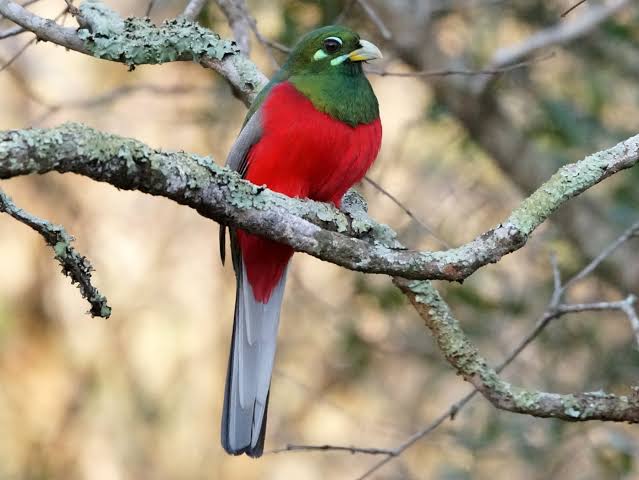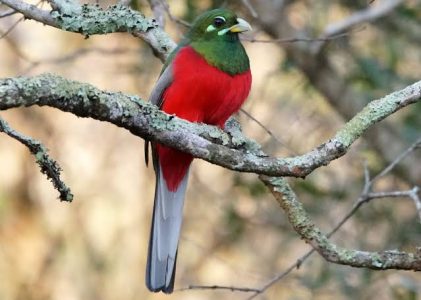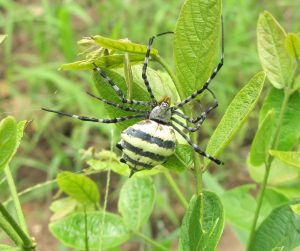LOCATION OF THE PLOT

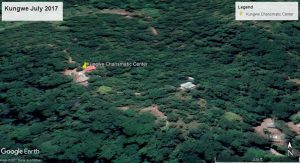
COORDINATE POINTS
Coordinate System : U
TM (Universal Transverse … ) Datum : ARC 60
Geoid Model User Units : Meters
Export Date: 2012/04/05
13:34:08 (Local) Time Zone: GMT+ 3.000h
LUHAKWE TRIG 9233544.770 381834.800 807.612
PIN1 9235871.305 381871.688 340.786
BCI 342 9235825.178 381170.185 304.177
BCI 343 9235756.802 381184.893 318.356
BCI344 9235436.536 381301.216 375.908
BCI 345 9235350.352 381477.592 349.301
BCI346 9235393.366 381740.077 309.989
BCI347 9235411.320 382253.139 324.359
BCI348 9235357.531 382347.280 307.521
BCI349 9235307.111 382797.935 341.065
BCI350 9235288.973 383458.343 296.440
BCI353 9235994.965 384096.674 256.791
BCI354 9236448.855 383957.622 310.450
BCI355 9236686.534 384135.598 278.668
BCI356 9236912.302 383929.522 352.614
BCI357 9236815.144 382192.860 381.432
BCI358 9236060.276 381207.740 340.750
Environment
Kuhusiana vizuri na viumbe vyote
 watu kukata miti holela katika eneo tuliloweka kuwa hifadhi ya msitu, hasa kuingia ki-haramu na kutayarisha mashamba yao. Kukata miti inasababisha majani kuwepo kwa uwingi, na baada ya majani kukauka, kuruhusu moto kuwaka kwa kasi.
watu kukata miti holela katika eneo tuliloweka kuwa hifadhi ya msitu, hasa kuingia ki-haramu na kutayarisha mashamba yao. Kukata miti inasababisha majani kuwepo kwa uwingi, na baada ya majani kukauka, kuruhusu moto kuwaka kwa kasi.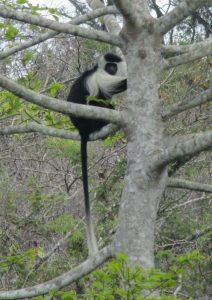 Kwa kusudi hilo tuna mipango ya kuunda kuunda ‘corridor’ kati ya misitu.Kwa hiyo tunategemea kwa miaka ijayo, kama itawezekana kwa kushirikiana na vijiji vya karibu, kuunda ‘corridor‘ ya miti ili kuunganisha misitu ya Kungwe na sehemu sehemu ya msitu wa Luhakwi. Jambo hilo ni muhimu kwa ajili ya kuvilinda viumbe vipatikanavyo katika mazingira hayo tu na ambavyo vipo hatarini kutoweka, kwa sababu ya sehemu ndogo ndogo ya mazingira yao vinapoishi.
Kwa kusudi hilo tuna mipango ya kuunda kuunda ‘corridor’ kati ya misitu.Kwa hiyo tunategemea kwa miaka ijayo, kama itawezekana kwa kushirikiana na vijiji vya karibu, kuunda ‘corridor‘ ya miti ili kuunganisha misitu ya Kungwe na sehemu sehemu ya msitu wa Luhakwi. Jambo hilo ni muhimu kwa ajili ya kuvilinda viumbe vipatikanavyo katika mazingira hayo tu na ambavyo vipo hatarini kutoweka, kwa sababu ya sehemu ndogo ndogo ya mazingira yao vinapoishi.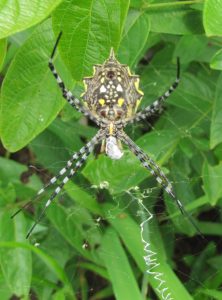
To care for the environment
To preserve what is there
There are also all kinds of reptiles, from the smallest to the biggest the Python, including the
Black Cobra, the Cape File Snake (Mehelya Capensis), the Puff Adder (Bitis arietans), and many others.
More than hundred species of birds have been recorded so far in the plot of Kungwe.
Formation Centre. There will be much more when ponds will be created. Some are seen some time to time, as for example
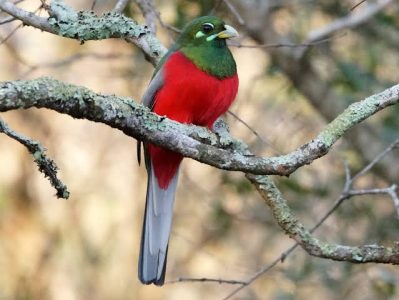
these big eagles: Southern Banded Snake eagle (Circaetus Fasciolatus), Martial Eagle (Polemaetus bellicosus), Crowned eagle (Stephanoaetus coronatus), Long-crested eagle (Lophaetu occipitalis). Others are migrants within Africa, as the Red- capped Robin-chat (Cossypha natalensis), while others are migrants from Europe, as European Bee Easter (Merops apiaster), Barn Swallows (Hirundo rustica), European Oriole (Oriolus oriolus), Common Whitethroat (Sylvia communis) and so on. Many of them fill the forest with their beautiful colours, while others, most of the time unseen, make us rejoice by their melodious songs, especially the White-browed Robin-Chat (Cossypha heuglini).
 During the rainy season one can enjoy to look at the beautiful flowers which grow wild in the bush or deep inside the forest.
During the rainy season one can enjoy to look at the beautiful flowers which grow wild in the bush or deep inside the forest.
To care for the environment is a priority for us.
We intend in the near future:
Kungwe Centre will help the villagers:
Advertisement
Following the policy of the government of Tanzania to look after the environment we have put over 200 hectares of forest as a reserve. It is a lowland forest, average altitude 350m, situated at the periphery of Uluguru Mountains, one of the Hotspots of biological diversity.
We are looking for partnership with an University to look after this forest reserve. There are great opportunities to make research, about trees, animals, birds, reptiles and insects.
Anyone interested contact us through our email address:
POUR LA CREATION DE LA RESERVE
NATURELLE DE KUNGWE
Situation Géographique
En l’an 2004 la Communauté d’Agape de Dar-es-Salaam a demandé aux autorités du village de Kibungo/Kungwe un terrain de 250 hectares. Les responsables du village leur ont proposé un terrain situé entre les montagnes de Kungwe (1104m) et de Luhakwi (900m). Au Nord délimité par la Réserve Forestière de Kungwe. A l’Ouest par deux petits ravins, à l’Est par la démarcation entre les villages de Kibungo/Kungwe et Mlilingwa, au Sud par la forêt de Luhakwi. Kibungo/Kungwe est un village situé dans la Région de Morogoro, au pied de la mountain de Kungwe, à peu près 60 kms au Sud Est de la ville de Morogoro. C’est un village important de 4439 inhabitants. Il ya deux écoles primaires, une école Secondaire, un dispensaire, deux mosquées, une église catholique et d’autres Pentecostistes et le Centre de Formation de Kungwe pour jeunes. Les habitants vivent surtout au Nord de la montagne de Kungwe, mais le village ne cesse de s’étendre au Sud et Sud-Est, à la recherche de champs disponibles.
Notre Centre pour formation de jeunes est situé au Sud Est de la montagne de Kungwe. Il forme la limite du vllage de Kungwe et du village de Mlilingwa. C’est une succession de petites collines couvertes de bois, séparées par des ravins et vallées. La partie au Nord est une forêt. Pendant la saison des pluies il n’y a pas de problèmes pour trouver de l’eau potable. Plusieurs rivières saisonnières passent au milieu du terrain alimentant la rivière Ruvu. Il tombe en général un mètre d’eau par an, mais les pluies sont de courte durée, pendant les mois d’Octobre et Novembre et de Mars à Mai. Aussi tous les cours d’eau s’asséchent très vite.
La principale raison pour créer ce Centre pour la formation des jeunes et d’une maison de retraite était de trouver une place en pleine nature. Nous avons choisi une petite colline au milieu de ce terrain où nous construisons les maisons nécessaires pour les besoins du Centre. Nous avons déboisés deux petits endroits pour cultiver. Nous avons élèvons aussi poules et canards !
Mais comme le terrain ne se prête pas vraiment à la culture, à moins de déboiser toutes les vallées, nous avons décidé de transformer ce terrain en Réserve Naturelle. En 2011 les authorités du village nous ont donné le feu vert pour être officiellenent enregistré. C’est un processus de longue durée, en général plusieurs années.
Impact sur l’environement
Nous avons décidé, au lieu de déboiser et de détruire toute cette végétation, de protéger l’environement. Il y a une grande variété d’arbres, plantes, animaux, oiseaux et insectes, dont beaucoup sont endémiques. Nous sommes sur le point d’entreprendre une étude écologique. Nous sommes situés dans les montagnes de l’Uluguru, qui font partie de ce qu’on appelle ici Eastern Arc Mountains. Mais notre terreain est à basse altitude où peu d’études ont été faites et par conséquence peu de protections envisagées. Aussi nous envisageons :
- D’interdire de couper un arbre sans une permission préalable et surtout sans planter de nouveaux arbres. Mais l’enemi principal est le feu de brousse. Ici les habitants ont la main facile pour allumer des feux de brousse qui détruisent tout.
- De créer dans les années qui viennent un corridor entre les deux forêts de Kungwe et de Luhakwi. Ces deux petites forêts sont sous la menace de disparaitre. Les causes sont multiples : recherche de nouveaux champs pour cultiver, coupe de bois, exploitation de petites mines d’or dans les rivières, et surtout feux de brousse. Ce corridor est important pour préserver les espéces endémiques qui ont besoin d’un certain espace pour survivre.
- D’établir une Réserve Naturelle pour préserver la faune et la flore, tout spécialement les espèces endémiques. Par exemple, on trouve ici une espèce d’Hiboux : Usambara Eagle Owl, Bubo vosseleri, qui vit seulement dans les montagnes de l’Usanbara (Tanzanie) et ici dans les montagnes de l’Uluguru..
- De créer un étang, aussez grand, pour la saison sèche, pouvoir alimenter en eau tous les animaux qui se trouvent dans les alentours. Quelquefois des buffles viennent la nuit boire dans notre petite réserve d’eau !!! Mais surtout créer une atmosphère humide pour neutraliser aussi que possible la désertification qu’apportent les feux de brousse.
- Donner des petites sessions et cours sur :
L’exploitation d’une forêt
Connaissance Ornitologique
Connassance Lepidoptère
Comment exploiter un rucher
Etc.
Difficultés à résoudre
Feux de brousse. Notre principal souci est de combattre les feux de brousse qui détruisent tout et surtout les forêts naturelles. Le feu, non seulement détruit toute végétation, mais aussi consume les racines des grands arbres qui tombent après un coup de vent. Et pire encore le feu assèche le sol, il est difficule de trouver un point d’eau. Allumer un feu ce brousse est inscrit dans les mœurs. Il y a là toute une éducation à faire.
Prévention contre les petits chercheurs d’or. Dans beaucoup de régions de la Tanzanie on trouve un peu de tout : or et pierres précieuses, mais en très petite quantité. Aussi beaucoup de jeunes passent leur temps à fouiller le lit des rivières et des ravins, en quête de quelques pepites d’or. Ils creusent et creusent et laissent derrière eux un chaos écologique.
Routes à construire. D’une certaine manière c’est une bénédiction, mais d’un autre coté l’accès à cette future réserve est difficile.
Priorité. Création d’un étang de 400m de long sur 50 à 200m de large.

